While the game’s approach to the survival genre is a welcome attempt, ultimately it leaves the player feeling a little cold.
PS4: Released
Type: Single-player, Multi-player
Genre: RPG
Developer: Black Forest Games
Publisher: THQ Nordic
Release Date: 1 May, 2019


Introduction
Fade to Silence is the latest game from Black Forest Studios, published by THQ Nordic.
You take the role of Ash, a hard-bitten survivor of some sort of apocalypse that has all but destroyed the modern world, leaving the pitiful remnants of humanity eking out their miserable existence on a frozen planet, ravaged by the freezing cold temperature and wild blizzards. To make things worse, the Earth is besieged by some sort of otherworldly force that is corrupting everything, draining the last vestiges of life from the world. The game is described as a “survival adventure” on the Steam store page, and I suppose that’s fair enough, but I think it’s more survival-horror than it is survival-crafting, if that makes sense.
The game begins with some sort of ethereal being bringing Ash back from seeming death in a cave near the settlement that he apparently inhabited previously. The buildings are destroyed by fire and the inhabitants dead or gone — all but Ash’s daughter, Allie, for some reason (she’s also immune to hunger and cold; go figure). Your first action is to fight off the last of the attacking creatures and somehow, through a process that’s not really described, cleanse the corruption from the huge magic crystal around which the settlement was built. Apparently your power has something to do with the Eclipse — a giant floating moon-like body that appears in the sky occasionally — but like most of the missing backstory, this isn’t really explained well, or at least not within the first dozen or so hours of play, anyway.
Once you’ve restored the crystal and completed a couple of short tutorial-style quests, you’re basically left to your own devices. Gather resources, rebuild, find other survivors, and do what you can to work out what’s going on, and then cleanse the world around you of the blight that is destroying it.
Presentation
Fade to Silence looks nice, with big-budget production values, a beautiful frozen world in which you can die, and cold weather effects that are probably the best I’ve seen anywhere. Blizzards, swirling snow, ominous clouds, and the like build up to what is really a rather excellent portrayal of a frozen post-apocalyptic environment. Deep snow drifts and frozen waterways add to the charm, as do the occasional remnants of our lost civilisation that poke through the ice and snow.
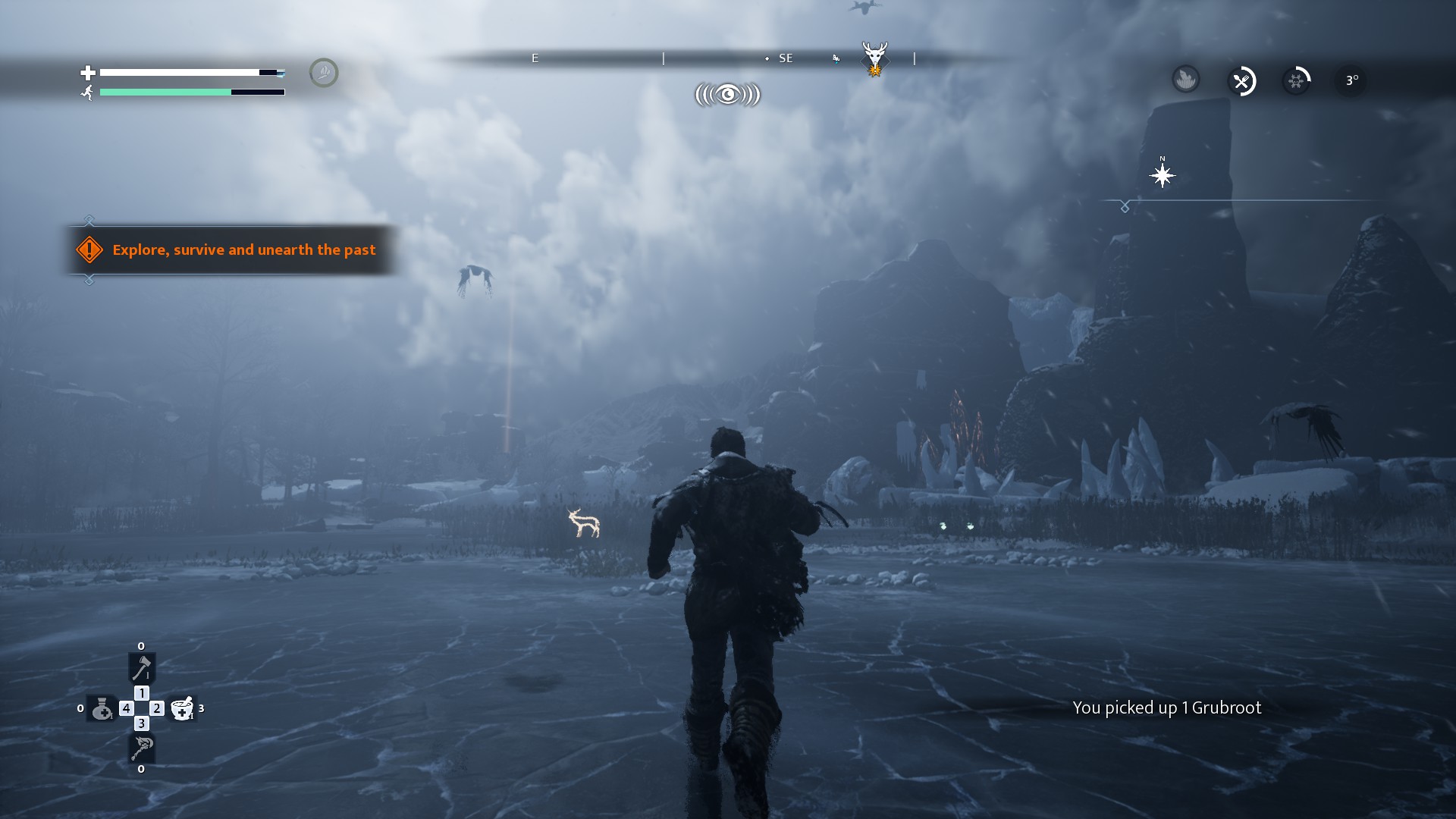
Character graphics aren’t so great, unfortunately, and with no character customisation you’re stuck looking at Ash, Allie, and their buddies as they come for however many hours or days you choose to play. They’re not bad, but they seem a bit sharp-edged and rough, and animations look a little stiff and wooden; they’re just not quite up to the same standard as the world around them.
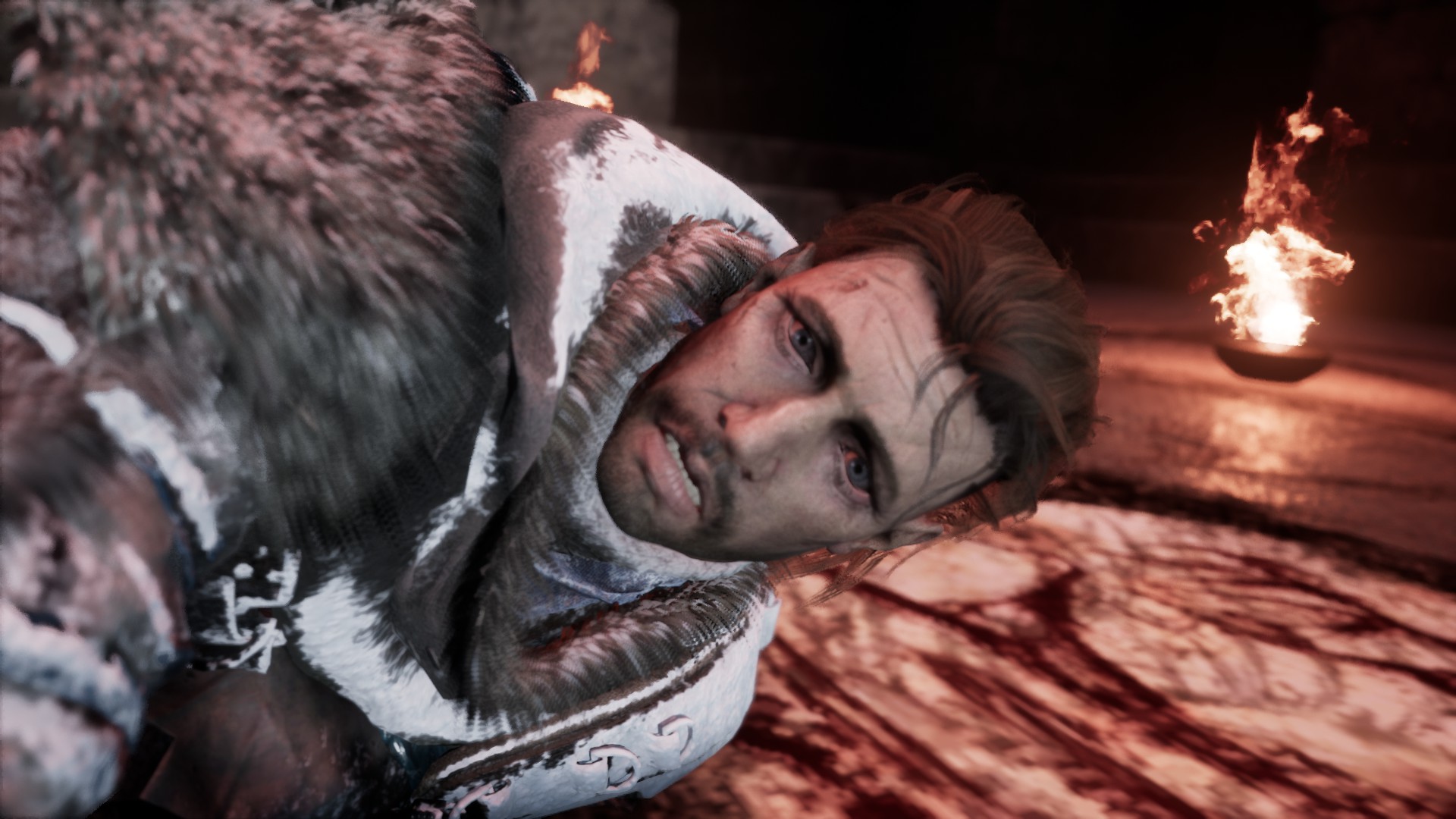
There’s also rather a lot of pop-in and pop-out, particularly around dynamic objects. If your followers cut down most of a grove of trees you’ll see the trees as still standing tall until you get within throwing distance, and then they’ll suddenly disappear. Conversely, a partially constructed building in your settlement will be rendered in its red or blue outline until you’re close by, at which point it will suddenly appear in its full glory in front of you. I suspect it’s something to do with the world streaming algorithm working with old data, but it’s noticeable enough to break the sense of lonely immersion for which the game strives.
Music is suitable for the game, with dramatic action music during encounters with the blight and quieter tunes while you’re off doing your own thing. It’s the sort of soundtrack you’d expect but doesn’t ever try to reach for anything more. Sound effects are well made, yet sometimes seem to be a bit out of place. A good example is the painful-sounding groans that Ash emits when you use a health poultice; he’s been completely silent while running around at death’s door for the last day, but when you give him any sort of healing medicine he just won’t shut up! The game has full voice acting, but it’s mostly pretty bad. I can’t say for sure if it’s just that the script is so terribly written or if the voice acting itself is also part of the problem. I mean, it must be pretty hard to sound convincing when saying some of the rubbish that’s in here. In either case, the game probably would have been better without it.
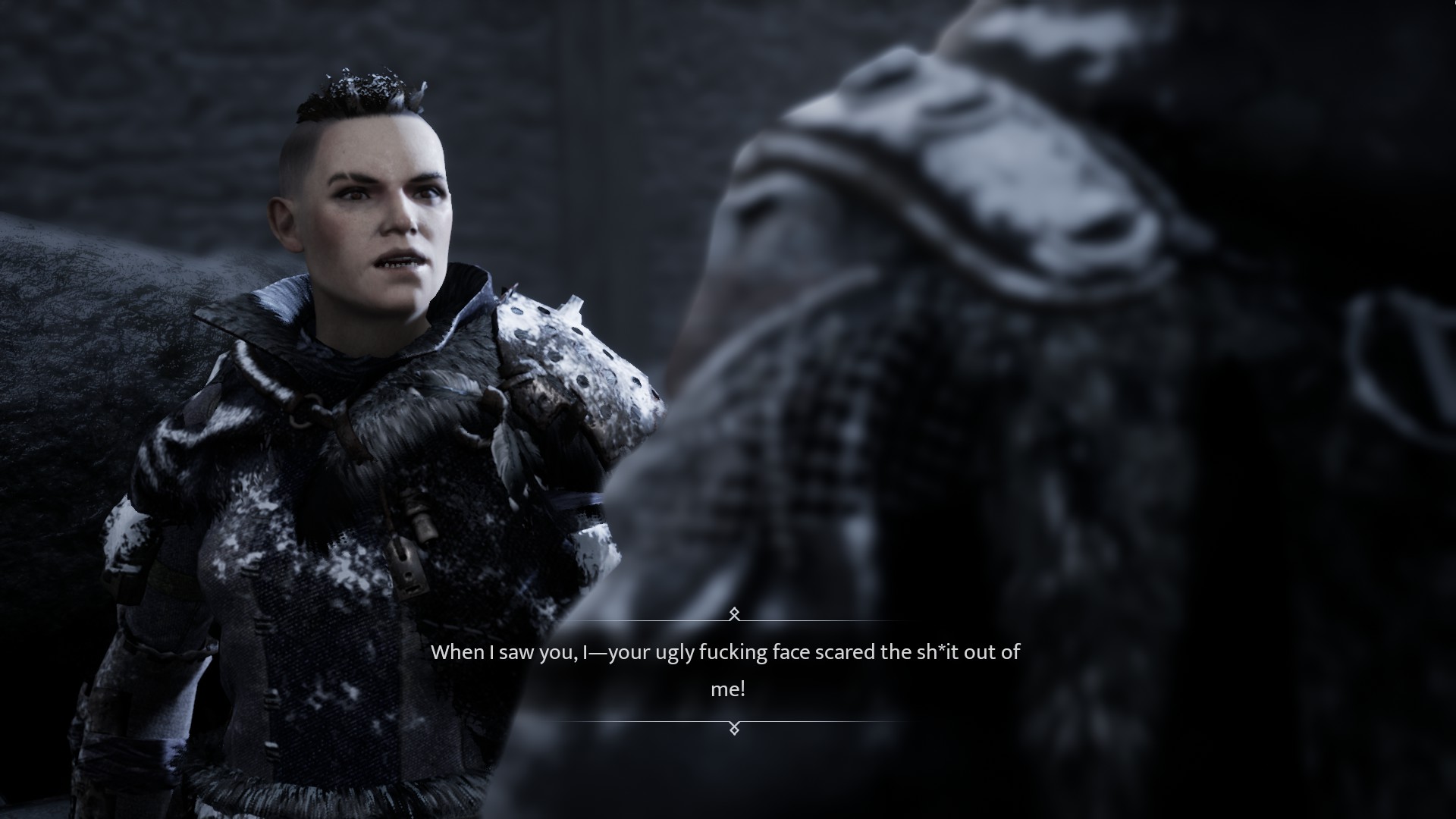
The interface is mostly straightforward and easy to understand, but some values seem to be wrong, which draws all of them into question. For example, I’ve seen an alert saying, “Jin is freezing!” while I’m standing right next to him and the interface tells me it’s a balmy 25 degrees C. Some of the crafting amounts reported for recipes are wrong, too, which again brings the others into doubt. This is pretty basic stuff, but players rely on this information, so it really should be correct. The full release brought some changes, too, most of which have actually made it slightly more clunky to use, which is a bit of a shame.
The games’s performance was good on my GTX1070-based laptop in Early Access with everything turned up to maximum. I’d seen a few very short pauses, but nothing common enough to cause any concern. Strangely it seems to have become slightly worse with the full release.
The Story
As I alluded to in the introductory section, there seems to be a detailed and interesting story behind the world of Fade to Silence, but finding that story is not straightforward. The apocalypse that all but destroyed the world; the Eclipse (the ominous giant floating moon-like object in the night sky); Allie’s seeming imperviousness to corruption, hunger, and cold; and Ash’s background, with his unique ability to cleanse the corruption about him, all beg for more game time, and in Early Access none were explained beyond the occasional reference from a NPC, or at least not to any degree of satisfaction within the time that I played. The developers seem to have realised this could have been a strong point of the story, however, and the full release has brought more information in the form of very short dream sequences whenever Ash rests, providing at least a bit more background into the game world.
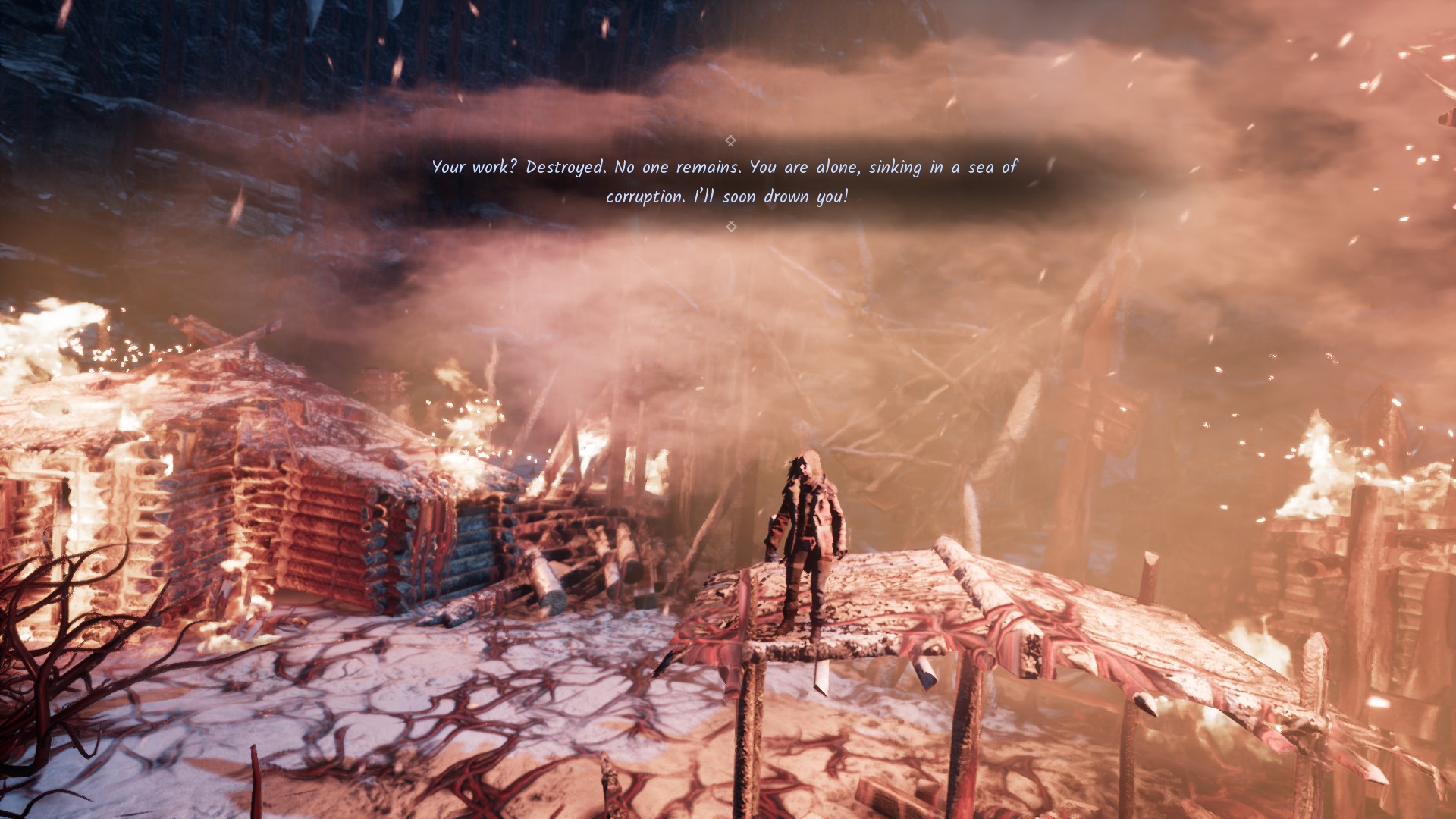
It still doesn’t feel like quite enough, though, as anything that anyone knows about the world is kept almost entirely to themselves, with only very occasional snippets of poorly written dialogue emerging from the lacklustre script giving you any inkling into what’s going on. What was the settlement for initially? Why was Ash there with his daughter? What caused the apocalypse? What is the corruption? And the Eclipse? The characters would know these things, but they refuse to share, to the point that it’s not mysterious, it’s just annoying. I found myself skipping item descriptions and leaving the room to get a cup of tea when one of my followers wanted to open up, because the writing was just not convincing enough or revealing enough to bother. I think I can see what the developers were aiming for, but they missed the mark.
Gameplay: Survival or Exploration, but not Both
Anyway, initially, Fade to Silence seems to play like a pretty standard survival-crafting game, complete with resource harvesting, crafting, base building, and exploration, but — at least in Survival Mode, which is the “real game” mode, including meta-progression and Steam Achievements — it quickly becomes apparent that playing it that way dooms one to failure. You see, the developers have made a couple of key design decisions that fit much more closely with survival-horror or more traditional action games: you’re limited to only three lives / respawns (reduced from six in Early Access), plus extras from rare items that you can occasionally find in the world, after which you need to start the game again; and resources are strictly limited, adding a hard time limit to the game which is reduced further with each survivor who joins your settlement.
Now I don’t know exactly how much content there is in the game — I haven’t got close to finishing it — but the time investment required already is certainly enough to leave me questioning these design decisions; I generally don’t like time limits in exploration-heavy games, and any sort of perma-death doesn’t fit the genre, at least to my way of thinking. And in this case it’s particularly questionable having wood as a limited resource, given the prevalence of corrupted trees about the world; surely these could at least be burnt for heat?
As a sort of inducement for repeatedly playing in Survival Mode, the game includes meta-progression in the form of shards that gradually increase some of your traits, such as resistance to cold reduced stamina usage, as well as half a dozen or so different perks which can be unlocked depending on how far you got in your last game. The perks in particular can make your next game much easier to start off, with benefits such as starting the game with a dog sled or a wood or food stockpile. But there aren’t very many of them, and they take many hours to unlock more than one or two.
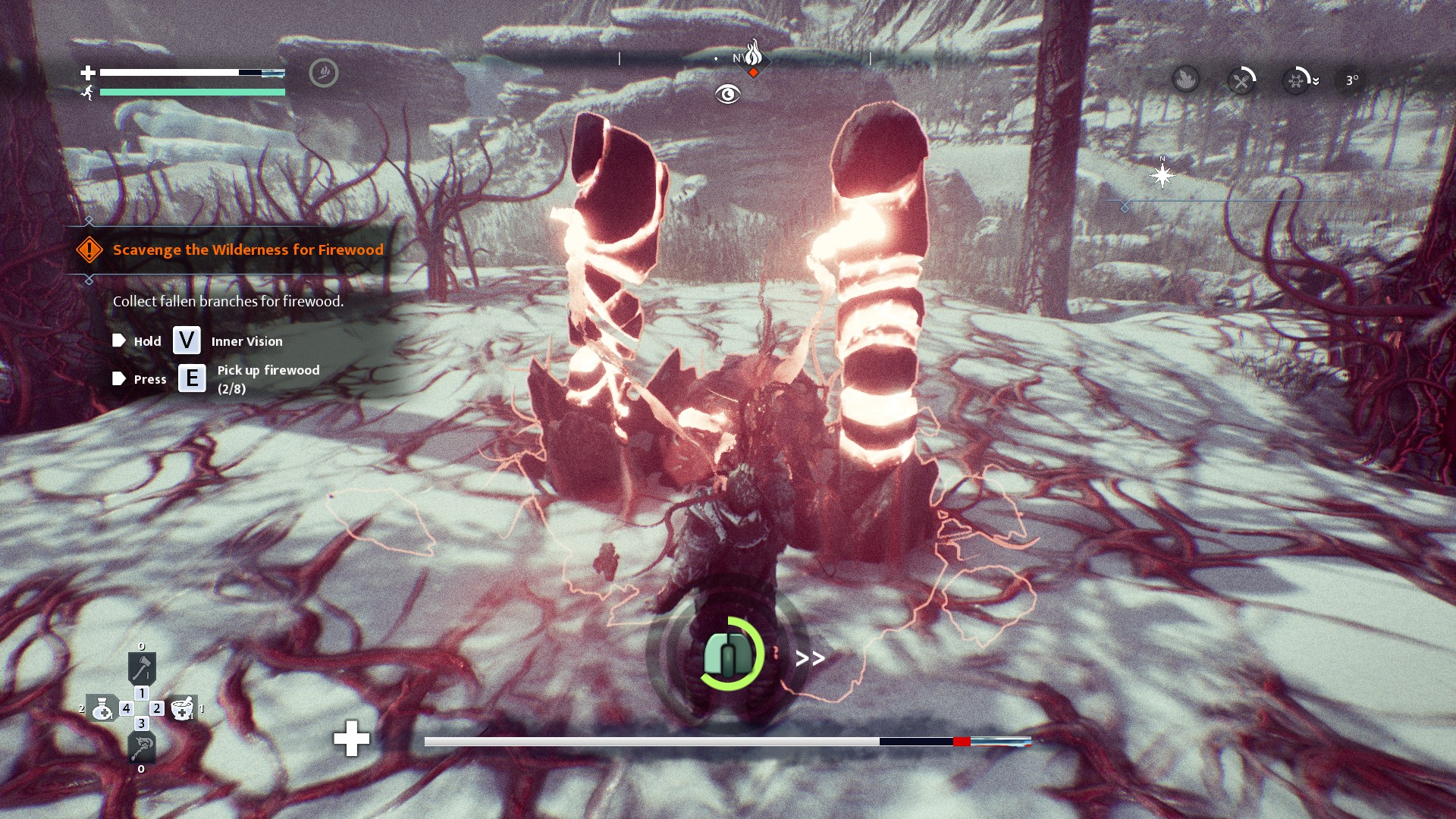
Exploration Mode, then, is a very welcome addition to the game. This mode takes the more traditional approach of providing effectively infinite resources through respawning resource nodes (most importantly, pristine trees for wood and reindeer for food) and also allows you to die as many times as you like; the three-death limit is no longer present. Unfortunately it also has other effects, such as reducing follower mortality rates and creature damage, and it seems to boost healing, too, making the whole game much easier. So either way, it’s a bit of a disappointment: either waste a huge amount of time dying in Survival Mode and having to restart, or breeze through relatively easily in Exploration Mode; there is no middle ground. But of the two game modes Exploration Mode is definitely the more appealing to me.
Survival aspects include warmth and hunger and these are implemented through gauges that gradually fill up as you venture out into the unforgiving cold or go without food. Once they’re full you don’t just die, though. Your health bar is actually made up of two values: your current health and your current maximum health. Suffer damage from the cold or go too long without food and your maximum health decreases, making it harder to survive the other dangers of the world. It’s perhaps not completely realistic, but it works well and, unlike many other aspects of the game, I found it reasonably forgiving.
The world, while large and impressive looking, is also very repetitive. It’s divided into various areas, each new one reached by defeating a boss creature and cleansing the outpost nearby of corruption. But from what I’ve seen so far along the way in each area you’ll find mostly the same enemy types, mostly the same resource drops (increasing in tier the farther you go from your settlement), and various minor obstacles that block your path, since your jumping ability is on par with that of a lame guinea pig and you’re unable to climb over anything. Your part of the world seems to be enclosed in walls of rock or ice, too, making the whole thing seem more contrived than it should be. And the backtracking across already-cleared areas overshadows the initial exploration sections significantly; even once you get a wolf sled and can teleport from the crystals found at cleansed outposts you’ll still spend a significant portion of your game time traveling back and forth through areas which are no longer of any interest.
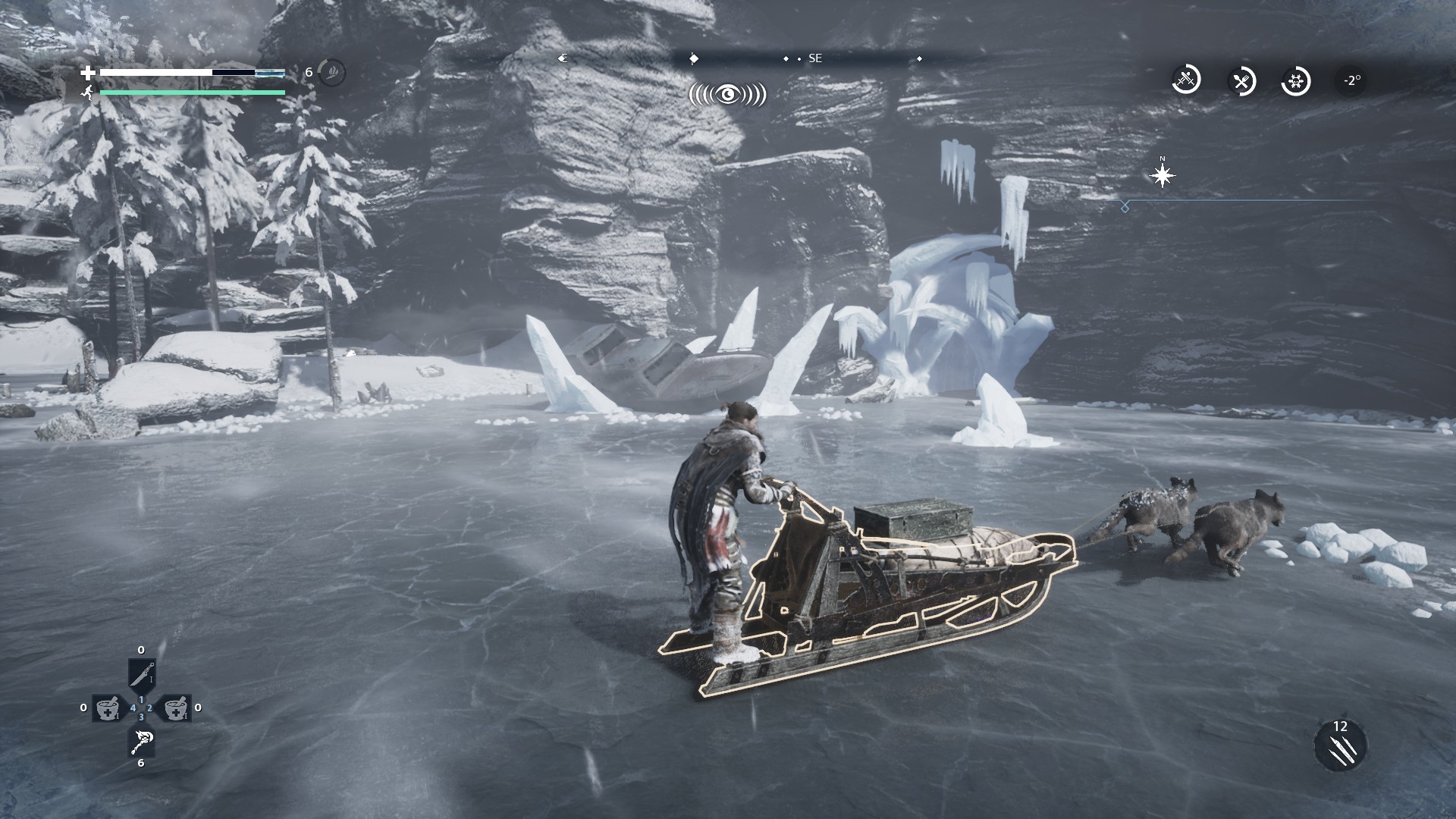
While the core gameplay in Fade to Silence is single player, it includes an interesting multiplayer aspect. Once you’ve got far enough to unlock your first survivor you can choose to leave him or her at your base, building or harvesting or crafting, or take him or her out with you into the world on an expedition. While I havent had a chance to try it myself yet, I understand that if you choose the latter you’re able to invite one of your Steam friends who has the game to join you, with your friend taking over the role of the survivor. The idea is an interesting one, and I can imagine it would make combat easier and less frustrating — simply having a NPC along with you helps with this, too — but regardless of whether they’re controlled by AI or another person, survivors accompanying you in the world need to stay close to the main player character; get too far away and the survivor teleports next to the player. It sounds a bit restrictive, but if you have a friend to play with I’d assume the game would be more fun this way, even so.
Combat — Lots and Lots of Combat
Melee combat plays a very large part in the game; you can’t explore new ground for more than a short distance in any direction without encountering some sort of monster intent on your death. At least in the early game, these fall into three types: melee creatures that are easily killed by attacking and retreating and attacking again (melee kiting); ranged creatures that are easily killed by rushing up to them and hitting them until their health is low, then running away before they explode on you; and fast-moving melee creatures that you’re best keeping as far away from as you can. I’ve spent a touch over 10 hours playing so far and, other than similar bosses, that’s all I’ve encountered. For such a long game in such a large world, the lack of variation so far at least is a bit disappointing.
Worse than that, though, is the combat itself. Game controls are awkward and clunky, and feel worse in combat where reflexes matter the most. Picture a sluggish, unresponsive, and far more limited version of Conan: Exiles combat and you’ll not be far off. You have a stamina bar that depletes rapidly with attacking, blocking, and dodging. Your dodges seem to have a few invincibility frames, but your attacks don’t, so timing of attacks and dodges is both critical and unintuitive. The game will auto-lock onto enemies when you don’t want it to, and sometimes won’t lock when you try, limiting your movement and camera control and leaving you cursing as the exploding monsters exploit this to charge at you when you can’t run away properly.
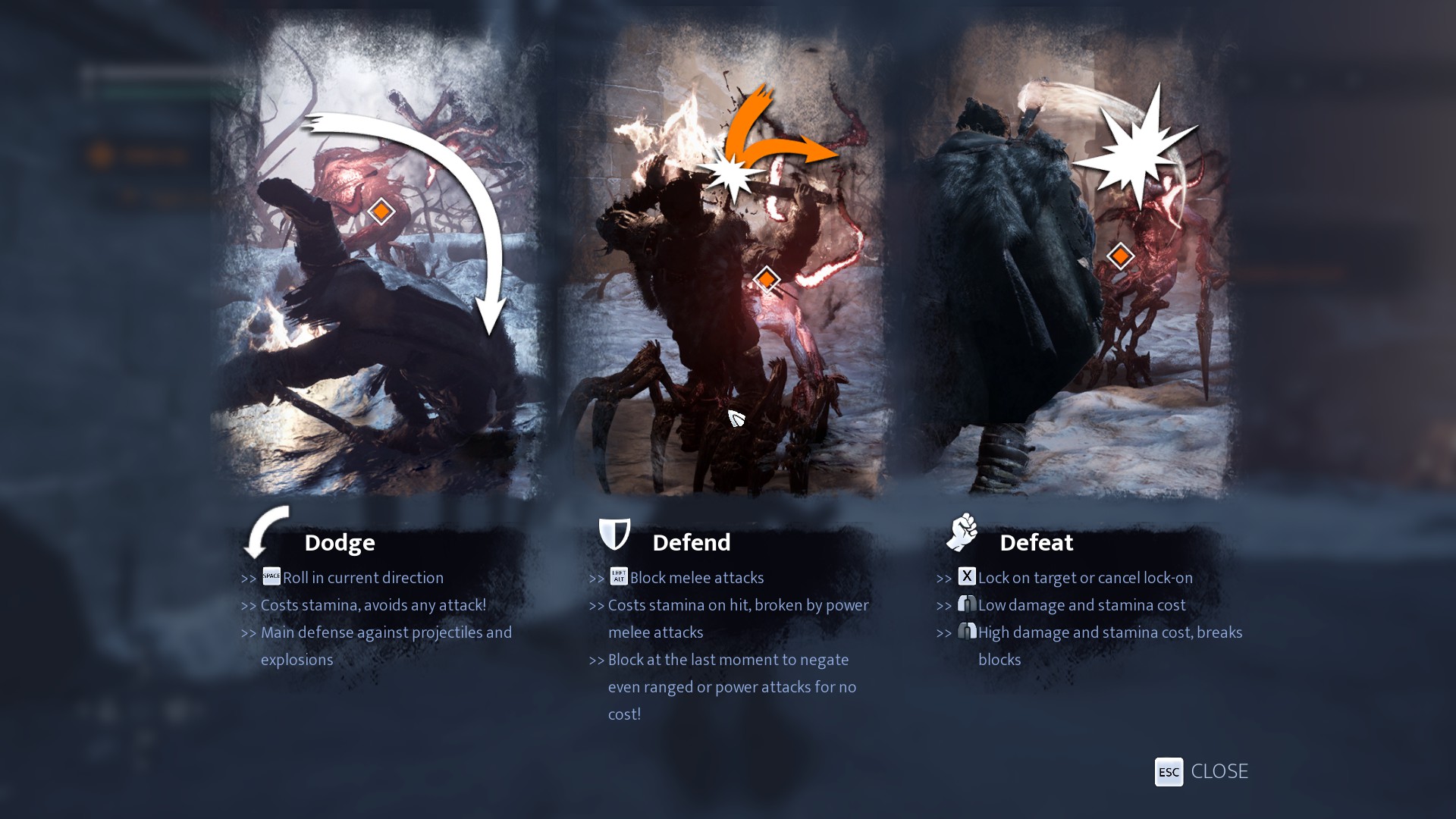
Enemy AI is rudimentary, with difficulty artificially increased through overpowered opponents and limiting of combat tactics. And hit boxes seem to be too big, making many attacks both from and against you hit when they really shouldn’t. It basically works, but only barely, and players have been complaining about it throughout Early Access. The full release notes suggest that some changes have been made to make combat less clunky, but honestly I haven’t been able to see a whole lot of difference. Maybe it’s slightly easier now to block. In any case, it’s still unfulfilling and frustrating.
Crafting, Base-building, and Bugs, oh my!
The game also includes crafting and base building, both of which are fairly limited in functionality and recipes compared to something like Conan: Exiles or 7 Days to Die. Base building feels more like a sort of “city-builder lite”, with your character having no direct involvement in the process. Instead you select pre-fabricated buildings and place them about the little plateau on which your settlement sits, where they’re represented by semi-transparent placeholders. You then assign a survivor to build each building and, if you have enough resources and you’re lucky, the survivor listens to you and stops what he or she is doing to come over and do your bidding.
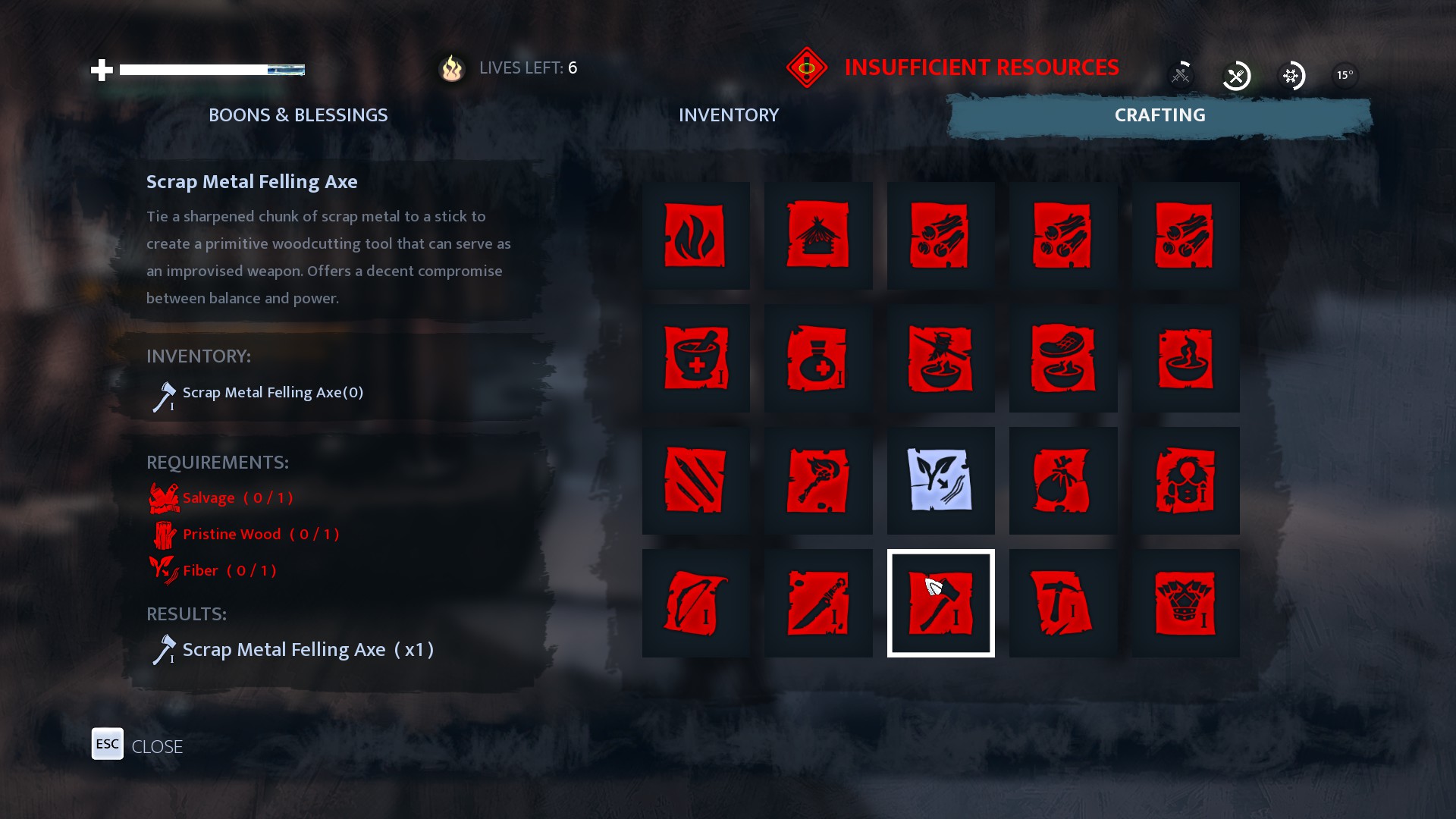
I say if you’re lucky because the game seems to suffer from pretty terrible survivor as well as enemy creature AI. Survivor assignments, including building, have a habit of resetting whenever anything changes. Temporarily run out of resources, have a survivor head off to rest or get hungry or cold, get attacked by enemies, or any other interruption, and there’s a good chance that you’ll have to reassign your survivors. I’ve even seen them just stop for no apparent reason at all. Survivors have food and warmth requirements, too, and they’re rather over the top, especially in Survivor Mode with its limited resources. Sometimes it’s so bad that you’re actually better off not finding any more survivors, since they’ll eat all your food and burn through all your wood while contributing very little to your goals, but since you can’t build anything yourself or craft many of the game’s recipes without them, ultimately you’re stuck with them. It’s just unfortunate that the base-building and survivor aspects of the game require a lot more micro-management than they should. Followers also seem to refuse to use the really expensive huts that you build for them, instead choosing to traipse across the entire frozen plateau of your settlement every time they want to rest, wasting a considerable portion of their working time.
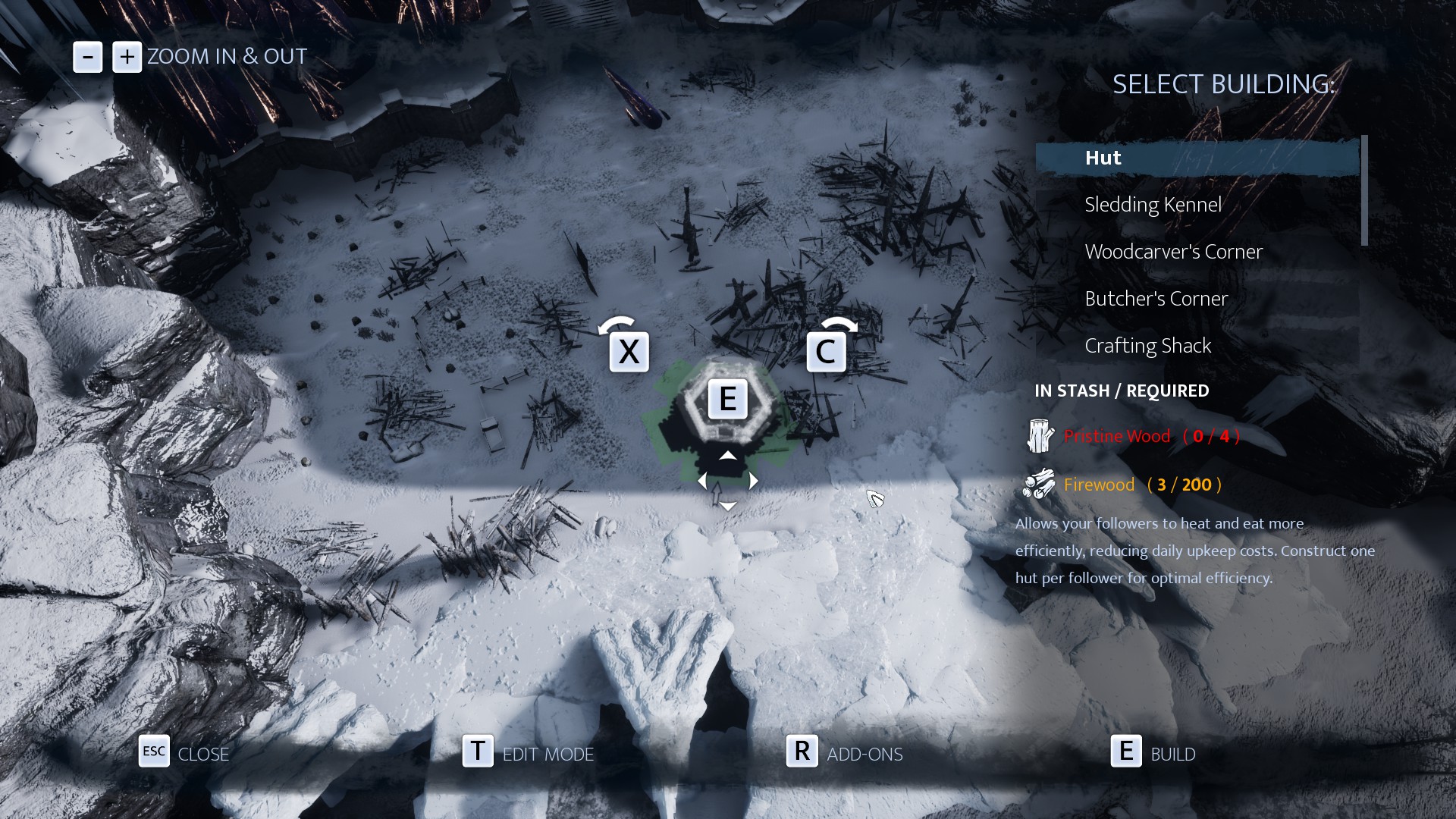
So, while the game does have some good ideas, most of them suffer from a number of problems. These are made considerably worse by the sheer number of bugs, which are still far too prevalent for the game to have left Early Access just yet, making me suspect that it released because of a deadline rather than because it was actually ready. These range from the minor, but annoying, such as the game deciding to not let you interact with a certain object (most often a tree or searchable bag, in my experience), requiring a restart; creatures sliding across the terrain instead of walking; achievements not dropping when they should; and crazy sled physics causing your sled to shoot into the air; to more important, but still not quite critical issues, such as containers becoming unsearchable if you get hit while you’re searching or looting them, or in the case of the little blight areas that you have to cleanse, not dropping at all; and the interface playing up and preventing you from interacting with the game at all. All up, Fade to Silence is one of the more buggy games I’ve played recently.
There are some other issues that aren’t quite bugs, too, but which could make the game more enjoyable if addressed. Personally I’d like to see stamina become less restrictive, wood last longer when burning, the ability to use corrupted trees for firewood, the ability to pick up arrows after you’ve fired them (you can find others in the world, but not your own after you’ve used them), 10 quick slots instead of only four (I play with keyboard and mouse, not controller!), and for “set-piece” scenes such as survivor encounters to not reset if you die while engaged in them — it simply doesn’t make any in-game sense to have the same conversation with Jin three times because you died twice trying to rescue him; nothing else in the world seems to be reset when you die, so the scene scripting shouldn’t be reset either.
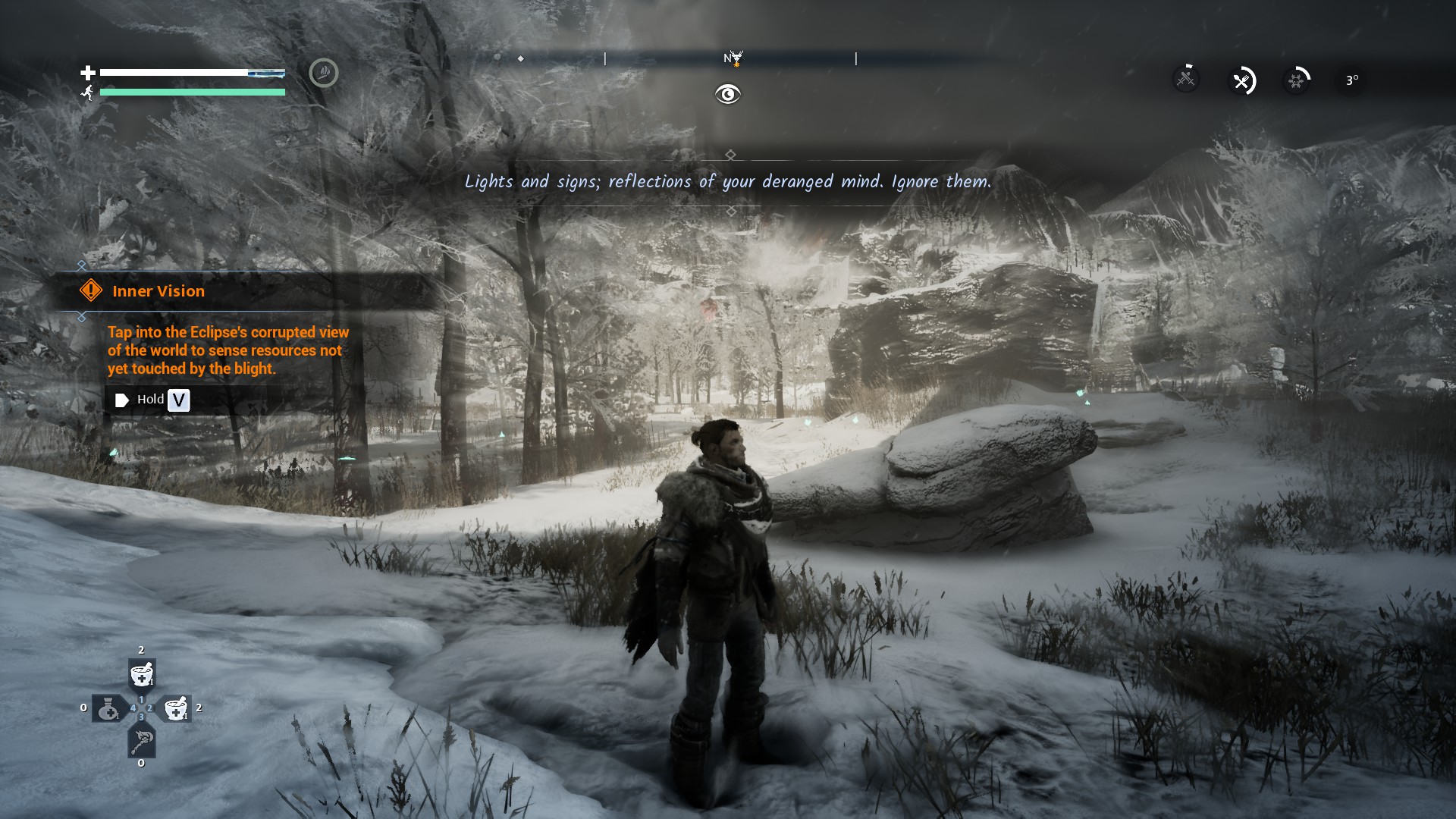
None of these are critical, but when added to the game’s frustrations and the plentiful bugs, the impression that I’m left with is that Fade to Silence should have stayed in Early Access a bit longer. It comes with an AAA price, but quality assurance hasn’t really been up to AAA standards.
Verdict
I am right on the fence with this one. One the one hand, the world itself is large and beautiful, the graphics and weather systems are impressive, and the story behind the game — what little I can work out so far, anyway — is pretty interesting. But on the other, the game is far too buggy to have been released out of Early Access in this state; combat is simply terrible and very prevalent (no matter what the store page says, this is not a strategist’s game); there are inescapable enemies that see you before you see them and can kill you in about 15 seconds; and each Survival Mode play through attempt is far too long and far too similar to the last to make limited player lives and the time limit introduced by the non-respawning resources a good thing. I imagine only players with a lot of free time and the patience of a saint would ever bother to complete the game in this mode.
I’ve had some fun with it, but that’s come with increasing amounts of frustration. The game’s bugs, stupid AI, and unrewarding combat make it far harder to enjoy than it should be, even allowing for the questionable design choices between the two game modes. The full release has brought with it a number of changes, mostly fairly minor when compared with the last Early Access update, but unfortunately not all of them are improvements. Overall, given the commitment in both money and time required to experience what the game has to offer, I’m finding it hard to recommend at this point.
But it is possible even for someone without the motivation to repeat Survival Mode over and over to simply ignore it and enjoy the game in Exploration Mode, which ultimately becomes Fade to Silence‘s saving grace. Honestly, though, I’d much rather play Conan: Exiles.

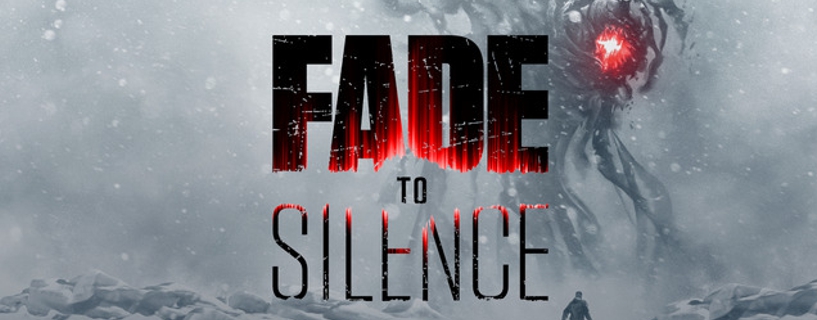









I think the construction mode could do with a little work – its near impossible to place all the resource buildings you’ll need to upgrade your gear but still have space on that little plateau for your settlers huts too. The spacing required between buildings is immense and they haven’t allowed for you to keep more than 3 or 4 followers if you’re going to upgrade your gear to the fullest extent possible or have the defence wall up for when the Eclipse’s creatures attack. its a choice you have to make early in the game whether or not to have good gear or good defence or sleeping quarters for your followers but you can’t have all 3……………